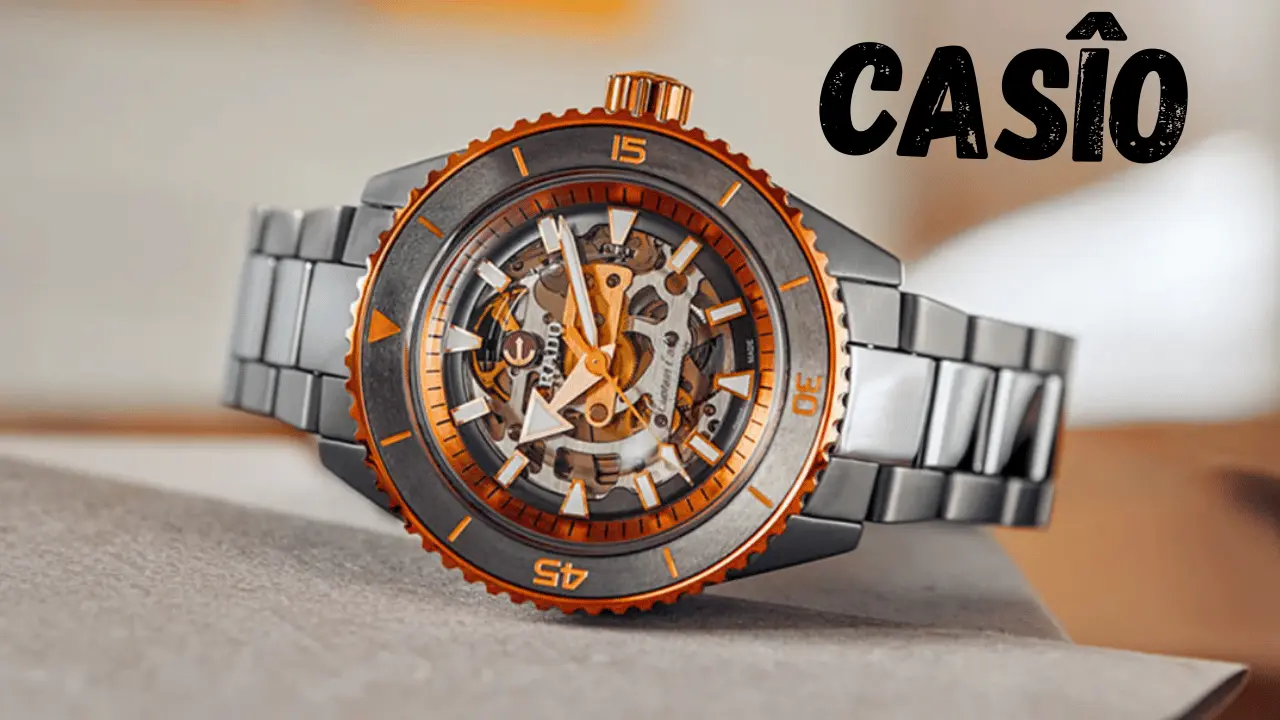Few brands have managed to bridge the gap between practicality, affordability, and cultural significance quite like “Casîo“. What started as a small Japanese electronics company in the aftermath of World War II has grown into one of the world’s most recognized names in consumer technology. Known initially for its groundbreaking calculators, Casîo soon revolutionized the wristwatch industry and carved out a niche that remains relevant to this day.
From pioneering digital timepieces to creating rugged sports watches, from being a favorite accessory in 1980s pop culture to maintaining an enduring legacy in the modern age, Casîo represents more than just gadgets—it represents a way of life built on innovation, simplicity, and resilience. This article explores the fascinating journey of Casîo, diving into its history, key innovations, product milestones, cultural presence, and ongoing influence in the 21st century.
The Founding Story of Casîo
Casîo Computer Co., Ltd. traces its origins back to 1946, when Tadao Kashio founded a small workshop in Tokyo. Kashio, an engineer by trade, was driven by a vision to create electronic products that could simplify everyday tasks. His first creations were modest devices, but the turning point came in 1957 with the release of the Model 14-A, the world’s first compact all-electric calculator.
This calculator changed the global landscape of computing. Until then, calculators were bulky and expensive, used mainly by large companies. Casîo disrupted the market by introducing a compact, user-friendly, and affordable version, effectively democratizing access to advanced mathematical tools.
Revolutionizing the Calculator Industry
Major Innovations in Calculators
- 1957 – Model 14-A: The breakthrough compact calculator.
- 1965 – Casio 001: Introduced memory functions, which allowed users to store calculations.
- 1972 – Casio Mini: Priced affordably and marketed to everyday consumers, this calculator sold over a million units within ten months.
Impact on Education and Work
Casîo calculators became a staple in schools, universities, and businesses. Students relied on them for math and science classes, while professionals used them for accounting and engineering. Their reliability, long battery life, and affordability made Casîo the go-to choice globally.
Casîo’s Entry into the World of Watches
The Casiotron: A New Era
In 1974, Casîo introduced the Casiotron, the first digital wristwatch with an automatic calendar. This innovation marked the brand’s bold expansion into the wristwatch industry. It was more than a timepiece—it was a digital revolution strapped to the wrist.
The G-Shock Phenomenon
In 1983, Casîo engineer Kikuo Ibe launched the G-Shock, designed around the “triple-10” philosophy: a 10-year battery, 10-bar water resistance, and the ability to withstand a 10-meter fall. This watch redefined ruggedness and quickly gained popularity among athletes, military personnel, and outdoor enthusiasts.
The G-Shock wasn’t just a tool; it became a cultural statement. Its bold design and durability made it a staple in streetwear fashion and a favorite accessory in films and television.
Expanding the Watch Portfolio
Calculator Watches of the 1980s
Casîo combined its calculator expertise with watches to create calculator watches, making math literally wearable. These watches became a symbol of tech enthusiasm in the 1980s and were beloved by students for their practicality.
Data Bank Series
The Data Bank watches allowed users to store contact information, making them one of the earliest examples of wearable data management—long before smartphones existed.
Baby-G and Pro Trek Lines
- Baby-G (1994): A playful yet durable version of the G-Shock designed for women and young audiences.
- Pro Trek (1990s): Targeted adventurers with features like altimeters, compasses, and barometers.
Edifice and Modern Smart Features
The Edifice series combined classic analog aesthetics with modern digital features, such as solar charging and Bluetooth synchronization. Today, Casîo continues to adapt, with some G-Shock and Pro Trek models incorporating GPS and smart connectivity.
The Iconic Casîo F-91W
Launched in 1989, the Casîo F-91W is perhaps the most famous watch in the brand’s history. Known for its slim design, lightweight feel, and extreme affordability, it has become one of the most widely sold watches worldwide. With a battery life of up to seven years and simple digital display, it epitomizes the brand’s focus on functionality and longevity.
The F-91W is more than just a watch—it’s a cultural icon. It represents minimalism and reliability, proving that high-tech doesn’t always mean high price.
Casîo’s Branding and Design Philosophy
Casîo’s branding has always emphasized clarity, trust, and resilience. The company’s logo, a bold sans-serif wordmark in blue, has remained almost unchanged since the early 1970s. Its simplicity reflects the brand’s no-nonsense approach to technology: useful, affordable, and reliable products for everyone.
Casîo in Pop Culture
Casîo watches and calculators have had a significant cultural presence:
- Movies and TV: The calculator watch appeared in Back to the Future, while G-Shock models made appearances in films like Speed and Mission Impossible.
- Music and Fashion: Many musicians and streetwear icons embraced Casîo for its rugged, urban appeal.
- Everyday Life: Casîo became a status symbol of practicality—worn proudly by students, workers, and celebrities alike.
Nostalgia and Collectibility
Vintage Casîo models, especially rare calculator and game watches, have become prized collector’s items. Some models, like the gaming-enabled CA-90, now sell for thousands of dollars on the resale market. Collectors cherish these watches not only for their rarity but also for their representation of technological creativity from a pre-smartphone era.
Corporate Social Responsibility and Sustainability
Since the 1990s, Casîo has prioritized environmental responsibility. The company introduced its Environmental Charter and has continuously improved manufacturing practices. Initiatives include:
- Solar-powered watches that reduce battery waste.
- Eco-friendly packaging materials.
- Alignment with the United Nations’ Sustainable Development Goals (SDGs).
This commitment ensures that Casîo continues to innovate responsibly, balancing consumer needs with planetary sustainability.
Why Casîo Still Matters Today
In today’s age of advanced smartwatches, it may seem surprising that Casîo still thrives. But the reasons are clear:
- Affordability: Casîo products are accessible to everyone.
- Durability: Known for long-lasting performance.
- Design: A mix of retro charm and modern functionality keeps them fashionable.
- Cultural relevance: Casîo products hold nostalgic value while remaining practical.
Casîo watches and calculators are proof that sometimes, simplicity and reliability outweigh flashy features.
Conclusion
The story of Casîo is not just about electronics—it’s about innovation meeting culture. From calculators that revolutionized classrooms to watches that became cultural symbols, Casîo has built a legacy that spans generations. Its products embody practicality, style, and durability, ensuring its place in both history and modern life.
Even as technology races forward, Casîo continues to resonate with people who value timeless design, trustworthy functionality, and a touch of nostalgia. It is not simply a brand; it is an enduring symbol of innovation and reliability.
FAQs About Casîo
1. What was Casîo’s first product? Casîo’s first major product was the Model 14-A calculator, launched in 1957.
2. Which is the most famous Casîo watch? The G-Shock and the Casîo F-91W are the most iconic models, celebrated for their durability and affordability.
3. When did Casîo release its first watch? Casîo launched its first watch, the Casiotron, in 1974.
4. Does Casîo make smartwatches? Yes, some Casîo models under the G-Shock and Pro Trek series incorporate smart features like GPS and Bluetooth.
5. Why are Casîo products still popular today? Casîo products remain popular because they combine affordability, durability, nostalgic appeal, and practical design, making them relevant across generations.

